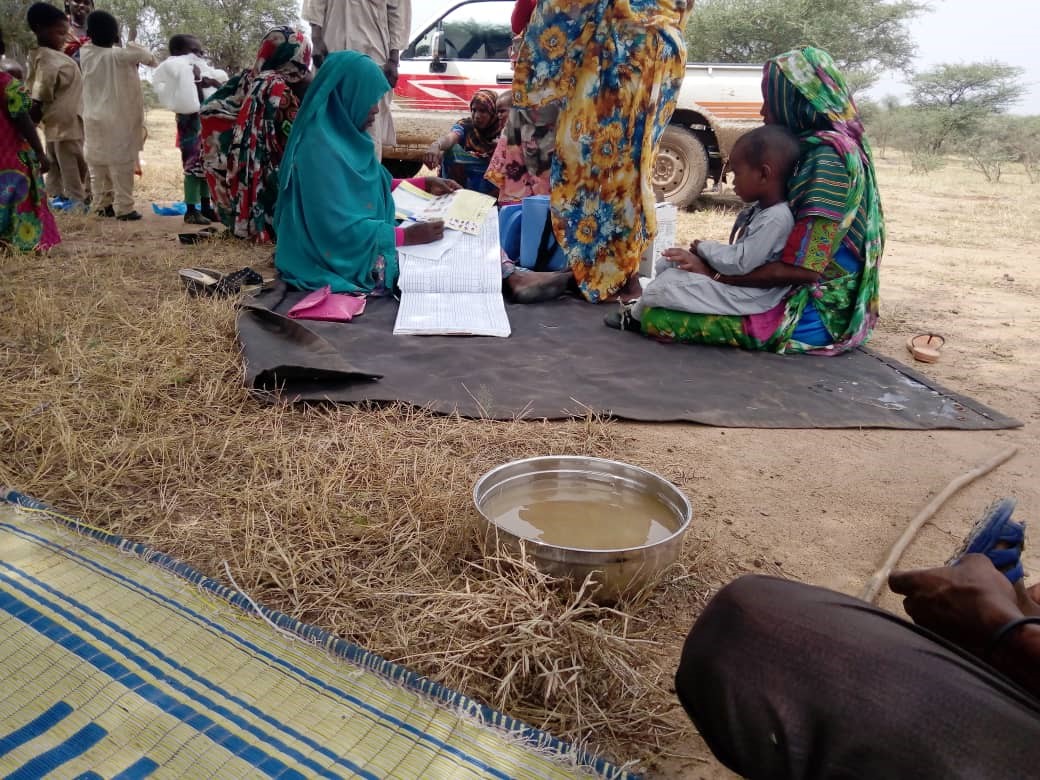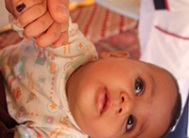 A mobile vaccination team provides polio vaccinations to nomadic communities during the accelerated immunization campaign in October 2019 in Rehaid locality, on the border of Sudan and CAR. ©WHO/Sudan
A mobile vaccination team provides polio vaccinations to nomadic communities during the accelerated immunization campaign in October 2019 in Rehaid locality, on the border of Sudan and CAR. ©WHO/Sudan
12 December 2019 -- The World Health Organization and national health authorities in Sudan are scaling up efforts to reduce the risk of poliovirus transmission to the country. Sudan borders a number of countries facing outbreaks of circulating vaccine-derived poliovirus (cVDPV), including Chad and the Central African Republic (CAR) to the west, and Ethiopia and Somalia to the east. Population movements between these countries increase the risk of importation of polio to Sudan.
To prevent a possible outbreak, WHO and national health authorities have been working amidst immense operational challenges to implement vaccination campaigns and bolster disease surveillance. Public health teams in Sudan and CAR are collaborating to share details of vaccinated refugee children with their country of origin, and exchange information on upcoming supplementary immunization activities and reported cases of Acute Flaccid Paralysis.
In September and October 2019, states on the border between Sudan and CAR implemented accelerated routine immunization to provide children with coverage against a variety of vaccine-preventable diseases. Teams conducted reviews of vaccination facilities and posts in border areas, and orientation sessions were held in healthcare settings to reinforce reporting cases of Acute Flaccid Paralysis. Children received oral polio vaccine, pentavalent vaccine, and inactivated polio vaccine. Initial data from the campaigns suggest a spike in coverage, with teams reaching many children previously unprotected.
Sudan was declared free of wild poliovirus in 2015, but remains at considerable risk for poliovirus importation or a VDPV outbreak. Much of the risk is shaped by Sudan’s unique population dynamics, and by the effect of population movement, conflict and instability affecting routine immunization.
Over 8 million children under the age of five are estimated to live in Sudan – an age group considered to be most vulnerable to contracting and being paralyzed by poliovirus. Sudan also has large numbers of internally displaced people and refugees, many in areas of the country with the lowest levels of routine immunization, such as the Darfur region.
For further information about polio eradication in the Eastern Mediterranean and African Regions, and around the world, visit the Global Polio Eradication Initiative website, polioeradication.org/.






